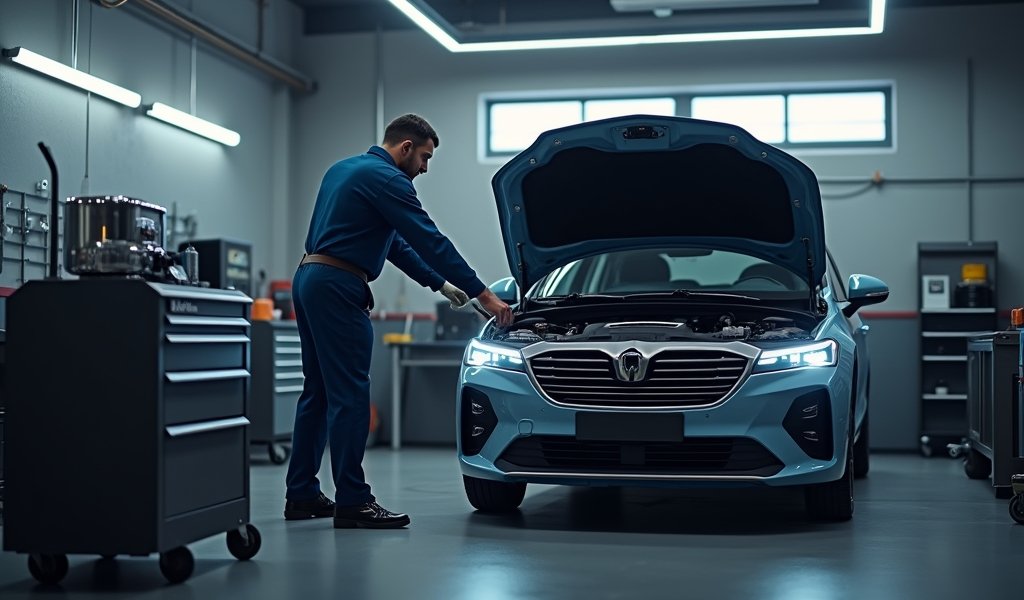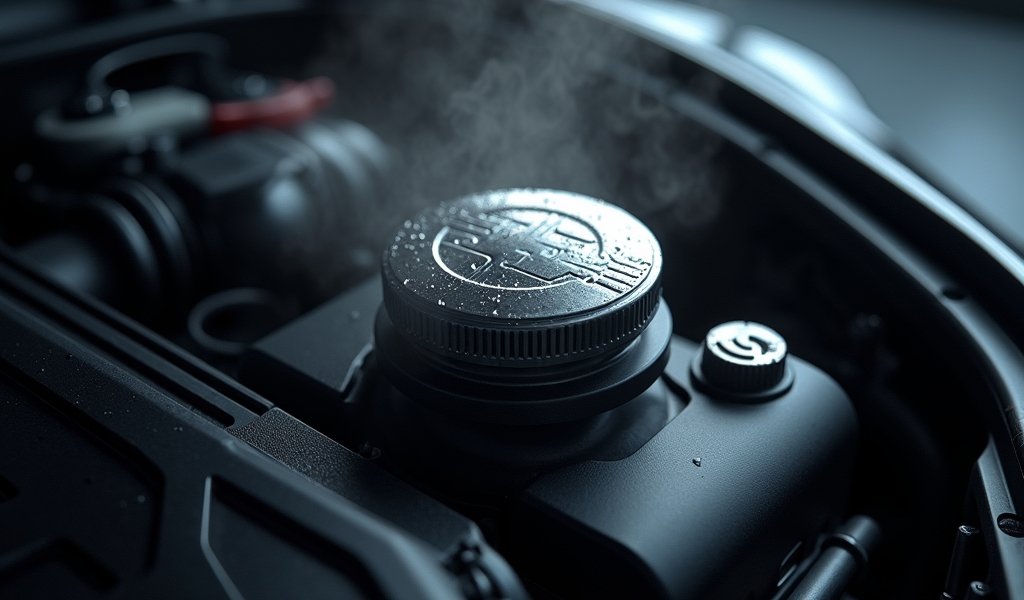Overview
This article explains the critical importance of using the correct radiator cap pressure rating for your vehicle, highlighting how this small component significantly impacts your cooling system’s effectiveness by raising coolant boiling points and preventing overheating. It provides seven practical tips covering proper pressure rating selection, symptom recognition, testing procedures, replacement guidelines, performance considerations, seasonal maintenance, and best practices to protect your engine and prevent costly repairs.
Table of Contents
- Understanding Radiator Cap Pressure Rating
- Why Radiator Cap Pressure Rating Matters
- Tip 1: Know Your Vehicle’s Recommended Pressure Rating
- Tip 2: Recognize Symptoms of Incorrect Pressure Rating
- Tip 3: Proper Testing Procedures
- Tip 4: Replacing Your Radiator Cap
- Tip 5: Dealing with High-Performance Applications
- Tip 6: Seasonal Considerations
- Tip 7: Maintenance Best Practices
- Conclusion
- Frequently Asked Questions
Understanding Radiator Cap Pressure Rating
That little radiator cap might seem insignificant, but trust me, as someone who’s spent decades under the hood, the radiator cap pressure rating is one of those subtle yet critical components that can make or break your cooling system. I’ve seen countless overheating issues that boiled down (pun intended) to nothing more than an incorrect pressure cap.
The radiator cap pressure rating refers to the amount of pressure your cooling system can handle before the cap releases excess pressure. Most passenger vehicles use caps rated between 13-16 PSI (pounds per square inch), but this varies depending on your specific vehicle’s requirements.
Think of your cooling system as a pressure cooker. The radiator cap acts as the regulator valve, maintaining optimal pressure to raise the boiling point of your coolant. This isn’t just mechanic talk – it’s thermodynamics in action right under your hood!
Why Radiator Cap Pressure Rating Matters
Every time I explain radiator cap pressure to a customer, I use this simple fact: for every 1 PSI increase in pressure, your coolant’s boiling point rises by about 3°F. That means a properly functioning 16 PSI cap can increase the boiling point from 212°F to approximately 260°F. That’s significant headroom for your engine to operate safely!
Using the wrong pressure rating can lead to serious issues. Too low, and your coolant might boil prematurely during normal operation, leading to engine overheating issues and potential damage. Too high, and you risk putting excessive strain on your radiator hoses, gaskets, and other cooling system components.
I once had a customer who replaced his factory 16 PSI cap with a 9 PSI cap because “it was the only one at the parts store.” Two weeks later, he was back with a warped cylinder head. That $8 savings cost him nearly $1,200 in repairs. The radiator cap pressure rating isn’t something to guess at – it’s specifically engineered for your vehicle’s cooling system.

Tip 1: Know Your Vehicle’s Recommended Pressure Rating
Finding your vehicle’s recommended radiator cap pressure rating isn’t as straightforward as it should be, but I’ve got some insider tips after years in the shop. Here’s how to track down this crucial information:
- Check your owner’s manual first – sometimes it’s listed in the maintenance or specifications section
- Look at the existing cap – most have the PSI rating stamped on top
- Consult your vehicle’s service manual (different from the owner’s manual)
- Call your dealership’s parts department with your VIN handy
- Search online forums specific to your make and model
One trick I’ve used for years: if you can’t find the information elsewhere, check the underside of your hood. Many manufacturers place a sticker there with cooling system specifications, including the correct radiator cap pressure rating.
Remember, vehicles from the same manufacturer often use different pressure ratings across models and years. A Honda Civic might use a different rating than a Honda Accord, even from the same year. Don’t assume – verify!
Tip 2: Recognize Symptoms of Incorrect Pressure Rating
After working on thousands of cooling systems, I’ve learned to spot the telltale signs of an incorrect radiator cap pressure rating. Being attentive to these symptoms can save you from more extensive damage down the road.
With a cap that has too low pressure rating, you might notice:
- Coolant boiling over, especially during hot weather or high-load driving
- Engine overheating without obvious leaks
- Gurgling sounds from the radiator
- Sweet-smelling steam from under the hood
- Coolant loss without visible leaks
If your cap has too high pressure rating, watch for:
- Leaks developing at hose connections
- Coolant seeping from the radiator seams
- Damaged upper radiator tank (especially on plastic radiators)
- Failed water pump seals
- Blown head gaskets in extreme cases
I once had a customer whose radiator hoses kept failing despite being replaced multiple times. Turned out, a previous shop had installed a heavy-duty 22 PSI cap on his standard sedan that required only a 13 PSI cap. The excessive pressure was literally blowing out his hoses from the inside!
Tip 3: Proper Testing Procedures
Testing your radiator cap’s pressure rating isn’t something most DIYers have equipment for, but it’s a standard procedure in any decent shop. If you suspect your cap isn’t holding proper pressure, here’s what a proper test involves:
Professional shops use a cooling system pressure tester, which typically costs between $100-300. The tester attaches to your radiator filler neck and allows us to pressurize the system and observe if the cap releases at the appropriate pressure point.
However, there are some checks you can perform without specialized equipment:
- Visual inspection: Look for corrosion, damaged gaskets, or weak springs
- Function check: The cap should offer resistance when turned and seal firmly
- Pressure retention test: A warm engine should maintain pressure for several minutes after shutdown
One simple test I recommend to my customers is to carefully feel the upper radiator hose after the engine has been running for about 15 minutes. It should feel firm – like squeezing a bicycle tire. If it’s soft and squishy, your system might not be holding pressure correctly, and the radiator cap is the first suspect.
According to research from Gates Corporation, nearly 30% of cooling system failures can be traced back to improper pressure maintenance – with the radiator cap being a primary culprit.

Tip 4: Replacing Your Radiator Cap
When it’s time to replace your radiator cap, don’t just grab any cap off the shelf. I’ve seen too many cooling systems compromised by this seemingly small detail. Here’s my approach after replacing thousands of caps:
Always match the pressure rating exactly to your manufacturer’s specifications. If your vehicle calls for a 16 PSI cap, don’t use a 13 PSI “because it was on sale” or an 18 PSI “for extra protection.” Cooling systems are designed for specific pressure ranges.
Quality matters with radiator caps. In my experience, OEM (Original Equipment Manufacturer) caps or premium aftermarket brands like Stant, Gates, or Motorad tend to maintain their pressure ratings longer than bargain options. The few dollars you save on a cheap cap can cost you hundreds in repairs.
Installation is straightforward but critical. Make sure the gasket is seated properly and turn the cap until it clicks into place. Never force it! If it doesn’t turn easily, check for misalignment or debris on the filler neck.
Many modern vehicles use a pressurized coolant reservoir system instead of a traditional radiator cap. If you’re looking for a radiator repair service to handle the replacement professionally, make sure they’re familiar with your specific system design.
Tip 5: Dealing with High-Performance Applications
High-performance engines often benefit from increased radiator cap pressure ratings, but this isn’t a modification to take lightly. After years of building performance cooling systems, I’ve learned some important lessons about upgrading radiator cap pressure.
In racing applications, higher pressure caps (often 22-24 PSI) can provide valuable additional headroom against boiling, especially in vehicles that run hot or experience extreme conditions. However, this should only be done after ensuring your entire cooling system can handle the increased pressure.
Before upgrading to a higher-pressure cap:
- Verify all hoses are in excellent condition and rated for higher pressure
- Inspect the radiator for any weak points or previous repairs
- Check that the water pump seals are in good shape
- Consider upgrading to a higher-pressure radiator if necessary
- Install a coolant temperature gauge to monitor system performance
I’ve worked with several track-day enthusiasts who found the sweet spot for their modified vehicles was about 2-4 PSI higher than stock. This provided additional protection without stressing the system components beyond their limits.
Research from the Society of Automotive Engineers (SAE) indicates that every 3 PSI increase requires approximately 15-20% stronger cooling system components to maintain the same safety margin.
Tip 6: Seasonal Considerations
Your radiator cap pressure rating considerations should change with the seasons, especially if you live in an area with extreme temperature variations. After working in both northern Michigan winters and Arizona summers, I’ve developed some seasonal strategies worth sharing.
In extreme heat conditions, your cooling system is already under maximum stress. This is when having the correct pressure rating is most critical. A cap that releases pressure too early can quickly lead to boil-over in stop-and-go summer traffic.
For cold weather, many people don’t realize that pressure rating still matters. A properly functioning pressure cap helps maintain consistent pressure during temperature fluctuations, which assists with proper coolant circulation even during warm-up.
If you use your vehicle in high-altitude environments, remember that atmospheric pressure decreases with elevation. At 5,000 feet above sea level, atmospheric pressure is about 12% lower than at sea level. This means your effective radiator cap pressure is slightly reduced at high altitudes, potentially lowering your coolant’s boiling point.
I always recommend checking your radiator cap condition twice yearly – ideally during spring and fall maintenance. The rubber seals in radiator caps can deteriorate over time, especially in hot climates where they’re exposed to high temperatures and ozone.
Tip 7: Maintenance Best Practices
Maintaining proper radiator cap pressure rating is part of a comprehensive cooling system maintenance strategy. Here’s what I recommend to my long-term customers to keep their cooling systems in top shape:
- Replace your radiator cap every 2-3 years as preventative maintenance, even if it appears to be functioning correctly
- Clean the radiator filler neck whenever you replace the cap to ensure a proper seal
- Use the cooling system flush and fill as an opportunity to inspect and replace the cap
- Keep a spare cap with the correct pressure rating in your vehicle’s emergency kit
- Never remove a hot radiator cap – wait until the system cools completely
When checking your cooling system, pay attention to the overflow reservoir. The level should fluctuate slightly between the “cold” and “hot” marks as the engine temperature changes. If you’re constantly adding coolant or if the reservoir remains full even when hot, your cap may not be maintaining proper pressure.
One maintenance tip I’ve given customers for years: mark your replacement date on the new cap with a paint pen. This simple step helps ensure you don’t forget when it’s due for replacement.
Remember that your entire cooling system works as a unit. Even with the perfect radiator cap pressure rating, a compromised thermostat, weak water pump, or clogged radiator will still cause problems. Engineering studies show that a systematic approach to cooling system maintenance yields the best long-term results.
Conclusion
Throughout my career working on everything from family sedans to race cars, I’ve seen how something as seemingly simple as radiator cap pressure rating can make a profound difference in your vehicle’s performance and longevity. The right pressure cap isn’t just about preventing overheating – it’s about optimizing your entire cooling system’s efficiency.
Maintaining the correct radiator cap pressure rating is one of those maintenance items that delivers tremendous value for minimal investment. A quality cap costs $10-20 but protects components worth hundreds or thousands of dollars.
Remember that your cooling system operates as a precisely balanced unit, with the radiator cap playing a crucial regulatory role. By following the seven tips we’ve covered, you’ll ensure this small but mighty component continues to protect your engine through all driving conditions.
Whether you’re a weekend DIYer or a daily commuter, understanding and maintaining your radiator cap pressure rating is one of those “secret” maintenance items that separates those who constantly deal with cooling issues from those whose engines run trouble-free for years. It’s a small detail that makes a big difference – exactly the kind of knowledge that separates casual car owners from true enthusiasts.
Frequently Asked Questions
What happens if I use a radiator cap with too high pressure rating?
Using a cap with too high pressure rating can damage hoses, seals, and even the radiator itself. The excessive pressure forces the system beyond its design limits, potentially causing leaks or component failure.
Can a bad radiator cap cause overheating?
Absolutely, a faulty radiator cap is a common cause of engine overheating. Without proper pressure, your coolant’s boiling point is lower, and the system can’t efficiently transfer heat.
How often should I replace my radiator cap?
Replace your radiator cap every 2-3 years as preventative maintenance. The springs and seals degrade over time, affecting its ability to maintain proper pressure.
Is it normal for coolant to be in the overflow tank?
Yes, some coolant in the overflow tank is normal. As the system heats and cools, coolant expands and contracts, moving between the radiator and overflow tank.
Can I drive with a broken radiator cap?
It’s not recommended to drive with a broken radiator cap. Your cooling system won’t maintain proper pressure, leading to potential overheating, coolant loss, and engine damage.

